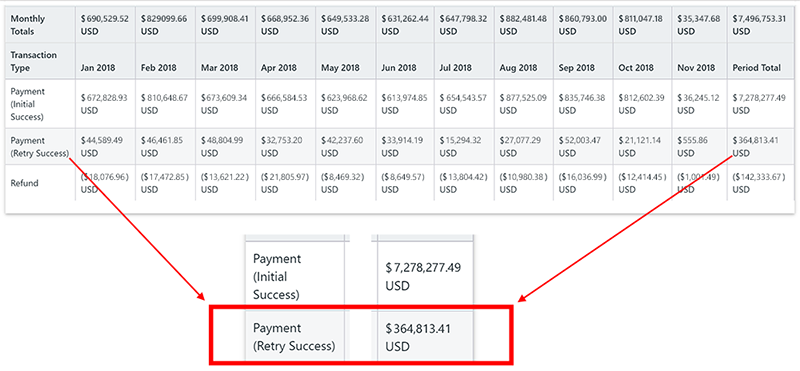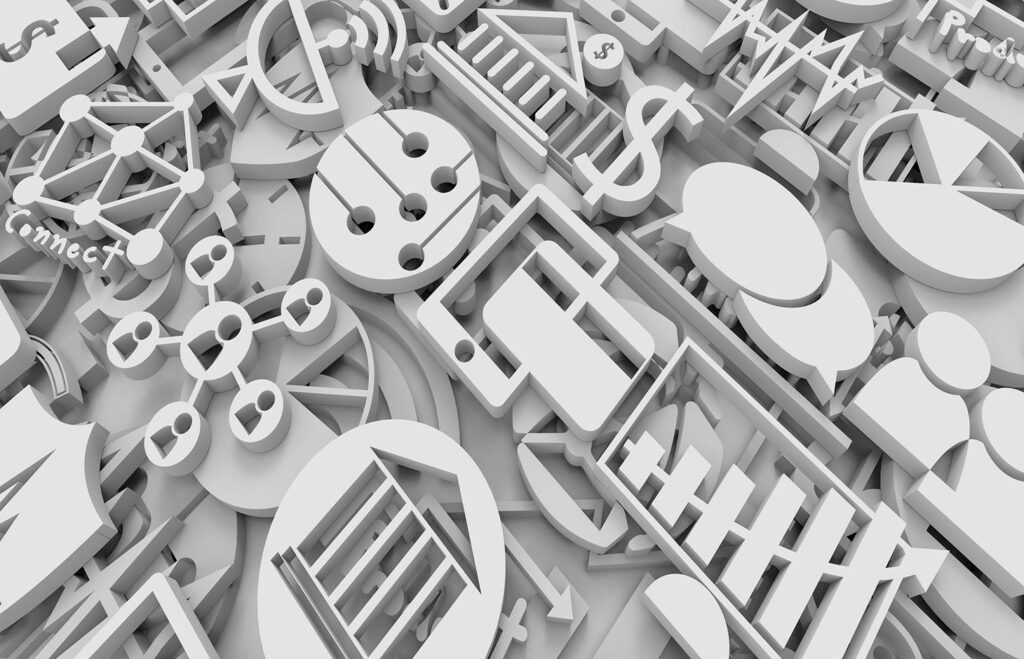In 2019, baby boomers are between 55 and 73 years old. Many have retired, or are planning for their upcoming retirement. The United States alone is anticipating the population of Americans aged 65 or older to nearly double from 52 million in 2018 to 95 million in 2060.
Not surprisingly, this increase in the senior population is prompting creative growth in the healthcare market. For example, Wellness—which is an Alarm.com product—is a home monitoring service for the elderly. With Wellness, caregiving is transcending traditional emergency-call push-button triggers for help.
This service is harnessing the power of the Internet of Things (IoT) with devices and sensors within seniors’ homes. And the data collected by these devices and sensors relays valuable information to caregivers, such as activity patterns, temperature, and security settings.
Wellness is a great example of gerontechnology, or technology that empowers seniors to stay in their own homes longer. The concept of arming them with equipment to maintain their independence isn’t new, but emerging technology is disrupting this niche now more than ever.
Seniors are increasingly trying to balance their independence with their growing physical limitations. Wellness is monetizing this trend toward supporting independence by tapping into IoT to give family members and caregivers a more comprehensive, virtual look into the lives of their loved ones without the invasion of cameras.
By leveraging key advancements in technology, businesses of all kinds are monetizing new opportunities and market segments faster and more effectively than their competition.
Agility and speed are key differentiators, driven by the increasingly competitive landscape.
The businesses that are best positioned to act quickly on new opportunities are those that are supported by an agile monetization ecosystem—a network of systems and processes that can include:
- accounting and revenue management
- product management
- CPQ (Configure Price Quote)
- contract administration
- order management
- CRM (Customer Relationship Management), and
- marketing automation.
Monetization requires:
- skilled employees, including marketing, sales, and customer service personnel
- technology to effectively meet the needs of the business and its customers, and
- proven business workflows in finance and billing.
When these three components work together effectively, it’s possible to launch new products and features within days, versus months. Quickly developing and providing solutions is critical in monetization. And the ability to rapidly test, introduce, and deploy new products, services, or even pricing models is the core of agile monetization.
How do you know if your subscription billing business is due for agile monetization?
Is your business trying to monetize without the proper support? Here are 13 key issues that underscore the need to look into a financial technology (fintech) solution to upgrade your agile monetization capabilities.
1. You have to recode your subscription billing system to make pricing changes.
Businesses need to be able to make pricing changes quickly to stay ahead of the competition. This might include changing pricing tiers, or bundling a new feature with other popular products within your business framework. Regardless, a billing system should be able to accept these changes without pulling in developers to reconfigure your system.
A comprehensive subscription billing system will support various pricing models, such as tiered pricing, volume pricing, usage-metering, one-time pricing, and hybrid billing variations of those pricing models.
2. Launching new offers requires six months of lead time.
One of the key objectives of agile monetization capabilities is to recognize an emerging need and quickly respond to fill that need. Where a legacy billing system may require tweaking to incorporate a new offer, a dynamic platform practically acts like a plug-and-play device and a financial system of record.
Many organizations tie their business processes to the limitations of their legacy applications. Launching a new offer or a new product in these types of business models often involves a coordinated effort of numerous functional areas such as sales, marketing, finance, and IT, and can take weeks if not months to deploy. New offers and new products can be released quickly with an agile billing solution, effectively breaking through the barriers presented by rigid legacy systems.
If your business is capable of launching new offers, but is mired down because your monetization plan lacks agility, it may be time to look for something with more flexibility.
3. Your financial and subscription billing system is too limited for your needs.
As your business continues to monetize, transactions may increase in complexity. What happens when a customer selects one plan but decides she wants to upgrade or downgrade that plan partway through the billing cycle?
An agile monetization system can support complex billing requirements so you can make changes quickly and accurately.
4. Your business has leaking revenue.
Sometimes revenue leaks are apparent, but often they aren’t easy to spot. For example, if your company offers a free trial period but has to manually ‘turn on’ the regular price at the end of the period, what happens if someone forgets? You’re giving away your product—literally.
The most common source of revenue leakage involves failed payments and can frequently occur in manual or legacy billing systems. Errors, lack of visibility, and the inefficiencies of manual processing can quickly add up and take their toll on your business.
Automated billing can streamline and eliminate manual processes, reduce errors, and increase efficiencies. For example, with dunning management you can proactively manage payment issues with strategies such as automatic payment retries. Sometimes as much as 75% of revenue can be recovered simply by retrying a credit card a few days after it initially failed.

A strategic approach to billing and the use of appropriate technology enables flexible monetization while automatically working to prevent and address leaking revenue.
5. Your customers continually dispute invoices, and you have a high percentage of re-bills.
Consider the customer frustration, re-bills, expensive bill-backs, and the costs of re-work when a customer disputes an invoice. Not only does this cost you money, but it also hurts your business’s reputation. And if the same customers continue to be invoiced incorrectly, eventually they’re going to stop contacting your customer service department to resolve these issues, and simply churn out.
Agile monetization systems alleviate this issue, sending out correct invoices every billing cycle.
After the sale, the invoice is often the one piece of communication a customer pays attention to. While other emails can be largely ignored, invoices are scrutinized. Customers expect them to be correct and transparent.
If there are invoice problems or a lack of perceived transparency, customers are going to react negatively. They put their trust in your company to provide a good product, and that trust extends to accurate, easy-to-understand invoicing.
6. Your sales department is constantly putting out fires with customer billing issues.
In the traditional sales model, there’s a short timeframe during which the customer and sales department connect. When the sale is over, the relationship ends. However, in the recurring billing business model, the sales/customer relationship is ongoing.
If your system generates incorrect invoices, customers are apt to contact the person they’ve already built a relationship with—the salesperson.
A cohesive monetization platform will help reduce problems that take your sales team away from making new sales.
7. Your business struggles to track contracts.
Contracts are essential in the subscription ecosystem because they encapsulate the agreement between the business and the customer. These contracts are negotiated, and often re-negotiated. When an agreement is made, it needs to be adhered to. But if there’s no set place to refer to those terms and conditions, critical billing mistakes can be made and customers will become dissatisfied.
8. You rely on spreadsheets to track critical business processes such as billing and revenue recognition.
The first step for many new businesses is to use spreadsheets to start tracking customers and billing. However, as your business grows, reliance on spreadsheets begins to bog down the system. Every change has to be made manually, and humans make mistakes. The result is the billing system is susceptible to costly errors.
In addition, it’s risky to use spreadsheets to track revenue recognition. ASC 606 standards require subscription businesses to break their revenue down by earned and deferred revenue. With a customer, the two revenue streams change daily, making it extremely difficult to track on spreadsheets.
When a business adopts a flexible monetization platform that includes a comprehensive billing system, it can protect critical business processes and position itself to grow successfully.
9. Your business struggles to identify a single source of truth (SSOT) for revenue.
In many instances, critical data can be compromised. This can guide a business into making poor business decisions.
CRMs are effective by nature because many different people can make changes to the information within them. However, using the data from a CRM to make important business decisions can be risky because that data could be skewed or incorrect due to manual manipulations.
Accounting systems are great for processing financial transactions, but the data they produce is historical. While this is useful for some elements of the business, it simply cannot provide a reliable SSOT.
Businesses that embrace monetization need to be able to make critical business decisions, fast. To do this, they need a reliable SSOT to help guide those actions.
10. “SKU sprawl” is messing up the system.
Businesses often sell to customers in different countries, requiring them to deal with different currencies and tax structures. This often results in different pricing catalogs, and can generate a great deal of confusion when it comes to making any pricing adjustments or other changes within the system.
Managing a range of varying prices, products, and offers over time can result in a bloated and disorganized mass of data. Companies spend about 25 minutes per SKU when they have to manually update data. This amounts to 20 months for every 10,000 SKUs. With the right system, businesses could cut those 25 minutes per SKU down to just four.
Agile monetization requires a great deal of flexibility. And in order to be fully productive with monetization efforts, products, features, and pricing patterns need to be managed appropriately.
11. Your business lacks a single flexible product catalog.
Businesses that are good at monetization know that changes are often made quickly. Any pricing adjustments or modifications to products themselves need to be consistent across the business. However, what if your business has multiple product catalogs with different owners? Changes are likely to be made haphazardly.
With a dynamic monetization platform, products and pricing are in one place. They’re accessible to the personnel who need to access them, without being susceptible to unauthorized changes.
12. Revenue tracking is all over the place.
How do you make a customer happy? You make them feel like they’re getting a deal. This may be as a showing of customer appreciation, or it might be to compensate them for a mistake your business made. Deals can come in the form of increased services or decreased pricing, at least temporarily.
With a legacy billing system, these fluctuations can be very difficult to track, and often require manual adjustments. If the deal is ongoing, a billing clerk needs to remember to make that adjustment every billing cycle, which can lead to expensive mistakes.
13. Your billing department takes days upon days to close the books.
At the end of every billing cycle, your accounting department needs to close the books, essentially ensuring all revenue has shifted to earned revenue with no deferred revenue left on the books.
In the traditional billing system, it was expected that it would take several days to reconcile all the accounts. However, as a business grows, what might have once taken four days can take a week or longer.
There’s a solution. With a dynamic billing platform, the time it takes to close the books can be drastically reduced, enabling your accounting department to focus on other important tasks.
Efficient monetization is critical in a rapidly-changing world. To maintain customer satisfaction, provide a superior product with a high perceived value, and maintain a competitive advantage, businesses need to be able to rely on the consistency of their system and processes.
If your business is evolving rapidly and experiencing one or more of these issues, it’s time to start considering the power of an agile and dynamic monetization system.







